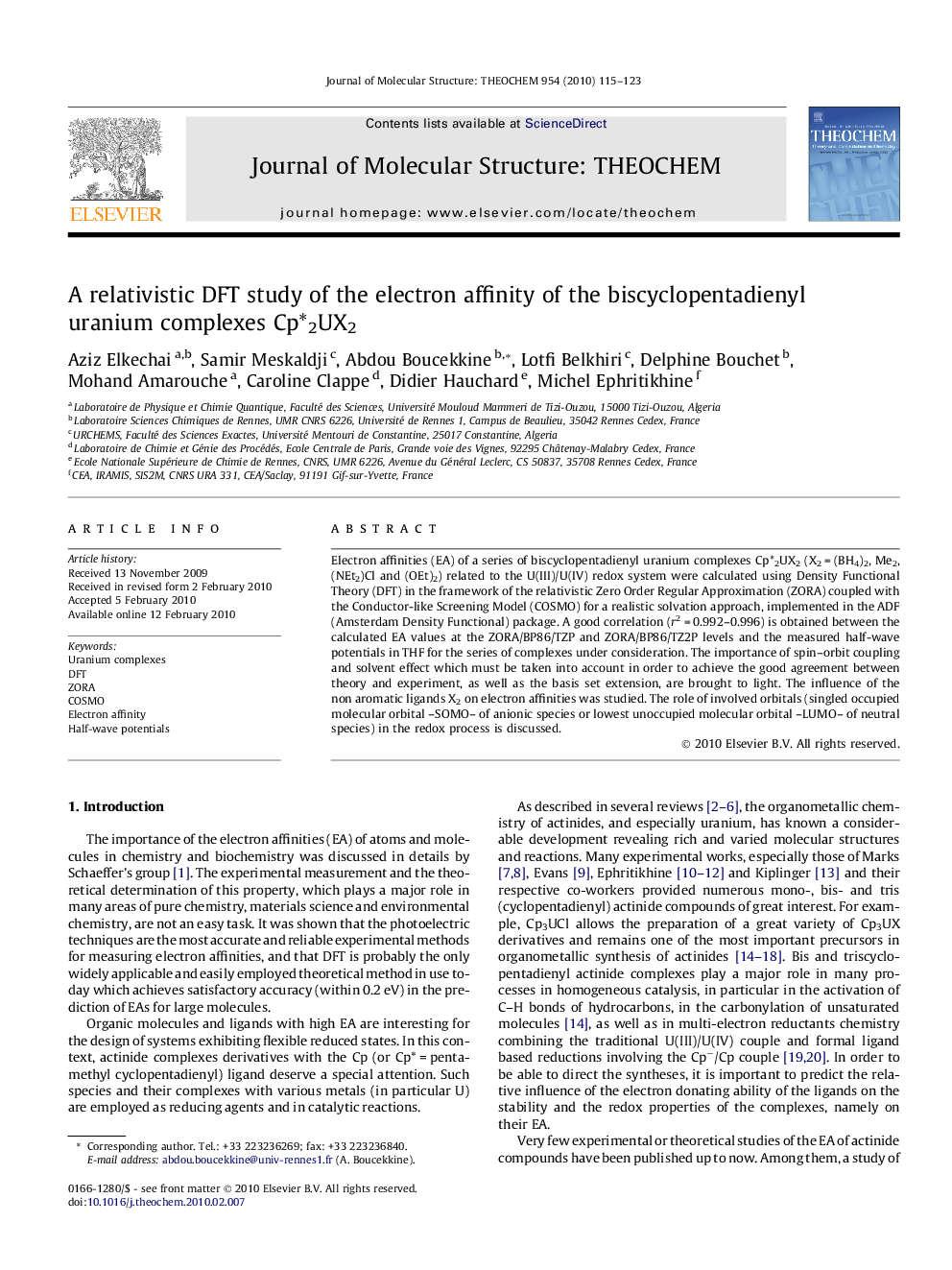| Article ID | Journal | Published Year | Pages | File Type |
|---|---|---|---|---|
| 5416668 | Journal of Molecular Structure: THEOCHEM | 2010 | 9 Pages |
Abstract
Electron affinities (EA) of a series of biscyclopentadienyl uranium complexes Cpâ2UX2 (X2Â =Â (BH4)2, Me2, (NEt2)Cl and (OEt)2) related to the U(III)/U(IV) redox system were calculated using Density Functional Theory (DFT) in the framework of the relativistic Zero Order Regular Approximation (ZORA) coupled with the Conductor-like Screening Model (COSMO) for a realistic solvation approach, implemented in the ADF (Amsterdam Density Functional) package. A good correlation (r2Â =Â 0.992-0.996) is obtained between the calculated EA values at the ZORA/BP86/TZP and ZORA/BP86/TZ2P levels and the measured half-wave potentials in THF for the series of complexes under consideration. The importance of spin-orbit coupling and solvent effect which must be taken into account in order to achieve the good agreement between theory and experiment, as well as the basis set extension, are brought to light. The influence of the non aromatic ligands X2 on electron affinities was studied. The role of involved orbitals (singled occupied molecular orbital -SOMO- of anionic species or lowest unoccupied molecular orbital -LUMO- of neutral species) in the redox process is discussed.
Related Topics
Physical Sciences and Engineering
Chemistry
Physical and Theoretical Chemistry
Authors
Aziz Elkechai, Samir Meskaldji, Abdou Boucekkine, Lotfi Belkhiri, Delphine Bouchet, Mohand Amarouche, Caroline Clappe, Didier Hauchard, Michel Ephritikhine,
